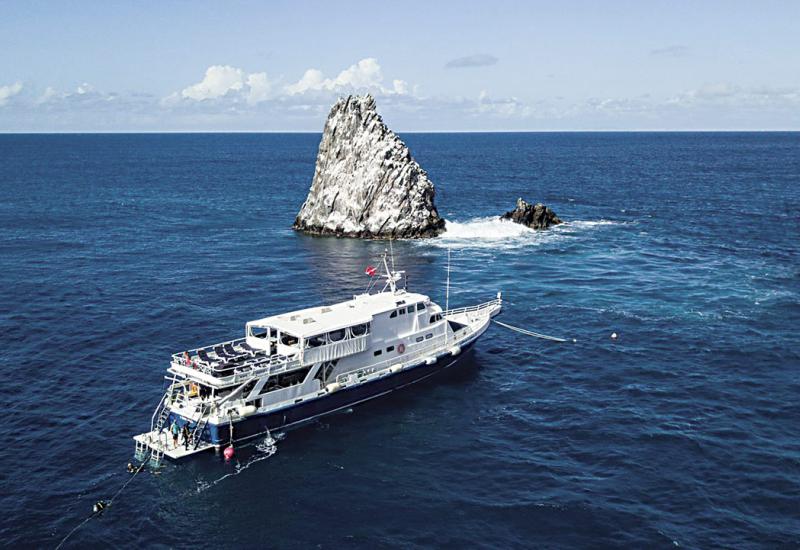Navigating a Safer Future for Whales

Melissa GaskillResearchers examine a blue whale killed in a ship collision on the West Coast.
A dive encounter with a whale is hard to beat. But many whale species are threatened by close encounters of a different kind: ship traffic. Collisions with ships are a leading cause of death for large whales worldwide; an estimated 80 or more blue, humpback and fin whales are killed each year by vessel collisions on the U.S. West Coast alone.
The actual death toll is higher than the number observed and recorded—most dead whales sink, are carried away on ocean currents, or decompose. “For every whale we know was hit by a vessel, we can multiply by 10 to get a better idea of what is actually occurring,” says Callie Steffen, a scientist at University of California Santa Barbara. “As the ocean becomes busier and shipping activity increases, we need to find ways for whales and ships to coexist.”
Whale Safe could help. The technology is a collaboration between the Marine Mammal Center, a global ocean conservation organization, and UCSB’s Benioff Ocean Science Laboratory.
“Whale Safe is a mapping and analysis tool that provides near real-time whale and vessel data for the Santa Barbara Channel and San Francisco,” Steffen says. These regions contain busy ports and jam-packed international shipping lanes—and are feeding grounds for endangered blue, fin and humpback whales.
The system combines several sources of data to determine whale presence and shares that information with ship crews so they can slow down, which dramatically reduces the risk of fatal collisions.
Related Reading: How to Swim with Humpback Whales in Tonga

Melissa GaskillA humpback whale fluke disappears beneath the surface in the Gulf of the Farallones off the coast of San Francisco, California.
Whale Safe also displays analytics on how well ships abide by a federal voluntary 10-knot speed limit, giving each company a letter grade indicating their cooperation. “In 2019, the cooperation in Southern California was about 46 percent, and at the end of the 2022 season the cooperation rate was around 61 percent,” says Steffen. “The numbers are trending in the right direction, but we would really like to see them closer to 100 percent.”
Whales play an important role in stabilizing the marine food web. These marine mammals also help regulate the climate by enhancing growth of phytoplankton, which captures 37 billion tons of carbon dioxide per year. Whale-watching generates billions of dollars for coastal economies throughout the world. The International Monetary Fund estimates that a single whale’s carbon and ecotourism benefits are worth more than $2 million.
Efforts like Whale Safe can help ensure these valuable whales remain in the sea. And that is good news for divers hoping to encounter one.
Related Reading: Go Big or Go Home! Best Dive Spots for Big Animals
How You Can Help
1. Sign up for regular reports on West Coast shipping industry performance at whalesafe.com/get-involved. If you can connect a product with a company receiving poor grades, find an alternative.
2. Report whale sightings to NOAA’s Whale Alert app (fisheries.noaa.gov/resource/tool-app/whale-alert), which alerts response agencies and provides scientists and resource managers with data to help prevent ship strikes.
3. When possible, buy local to avoid products that need to be shipped across seas.
4. Avoid perishable items, such as produce, from other countries. Time constraints make shipping companies less likely to comply with voluntary speed limits.
5. Buy less, and purchase used goods, such as clothing at resale shops and decor at flea markets, when possible. Many dive shops have annual used equipment sales.
6. Encourage retailers to support Protecting Blue Whales and Blue Skies (bluewhalesblueskies.org/community), a partnership incentivizing companies to follow sustainable shipping practices.










